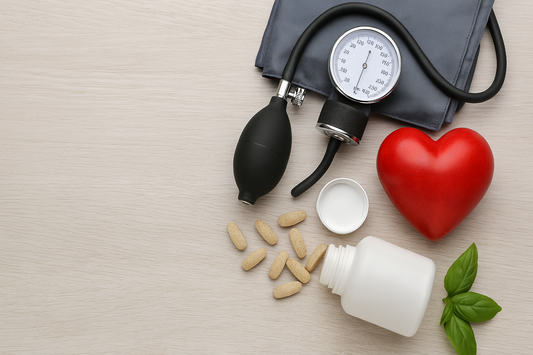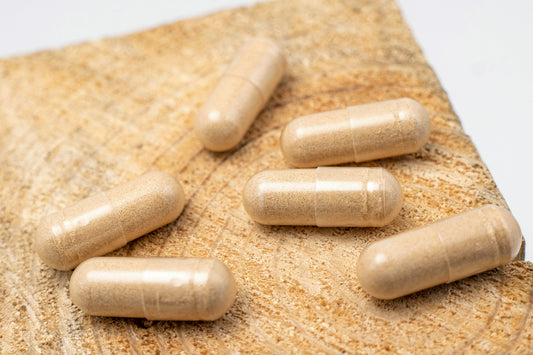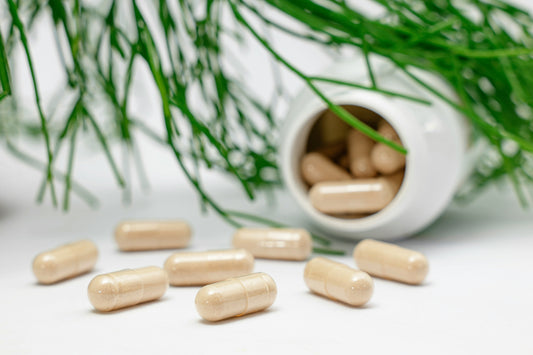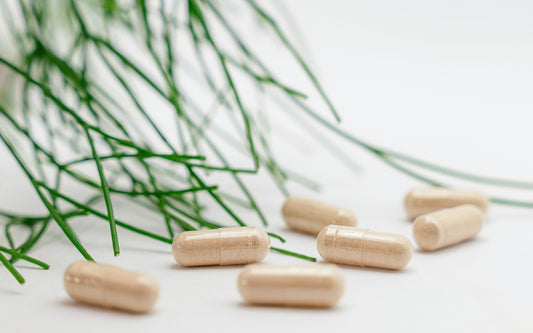How long does it take to lower your blood pressure?
Lowering your blood pressure is an important step in maintaining overall health, but you may be wondering how long it takes to see results. The good news is that with the right approach and lifestyle changes, you can start seeing improvements in your blood pressure within a matter of weeks.
Regular exercise is one of the most effective ways to lower blood pressure. It usually takes about 1 to 3 months of consistent exercise for it to start having an impact on your blood pressure levels. The benefits of exercise, however, are not permanent. You need to continue exercising regularly to maintain the positive effects.
If exercise alone is not enough, medications can also be prescribed to help lower blood pressure. These medications usually start working within hours and gradually improve blood pressure over time. However, it's important to note that medication should always be taken under the guidance of a healthcare professional.
In addition to exercise and medication, following a healthy diet can also play a significant role in blood pressure management. The DASH (Dietary Approaches to Stop Hypertension) diet, which emphasizes fruits, vegetables, whole grains, lean proteins, and low-fat dairy products, has been shown to be as effective as medication in lowering blood pressure.
Another program that can lead to significant improvements in blood pressure is the Pritikin Program. This program combines healthy eating and daily exercise and has been shown to produce noticeable results within just three weeks.
Alongside exercise and diet, several lifestyle changes can further support blood pressure control. Maintaining a healthy weight, reducing alcohol intake, quitting smoking, limiting sodium consumption, and managing stress can all contribute to lowering blood pressure.
- Regular exercise can start to lower blood pressure within 1 to 3 months.
- Medications for blood pressure usually start working within hours and continue to improve blood pressure over time.
- The DASH diet can be as effective as medication in lowering blood pressure.
- The Pritikin Program, combining healthy eating and exercise, can lead to significant blood pressure improvements in just three weeks.
- Lifestyle changes such as maintaining a healthy weight, reducing alcohol intake, quitting smoking, limiting sodium consumption, and managing stress can all help lower blood pressure.
Timeline for lowering blood pressure
The timeline for lowering blood pressure can vary depending on the approach you take. If you're looking to lower your blood pressure naturally through exercise, it can take anywhere from 1 to 3 months to see significant improvements. Regular physical activity, such as brisk walking, cycling, or swimming, can help lower blood pressure and improve overall cardiovascular health. Remember, the benefits of exercise last only as long as you continue to exercise.
On the other hand, if you're considering medication for blood pressure management, the timeline is often much quicker. Medications typically start working within hours to lower blood pressure and continue to gradually improve it over time. It's important to consult with your healthcare provider to find the right medication and dosage for your specific condition.
But it's not just exercise and medication that can help lower blood pressure. Following a healthy diet, such as the DASH (Dietary Approaches to Stop Hypertension) diet, can be just as effective as medication. This eating plan emphasizes fruits, vegetables, whole grains, lean proteins, and low-fat dairy products while reducing sodium intake. By adopting a DASH diet, you can see improvements in blood pressure within a few weeks.
In addition, the Pritikin Program, which combines healthy eating and daily exercise, has been shown to lead to significant improvements in blood pressure within just three weeks. This program focuses on a low-salt, low-fat diet along with regular physical activity to help normalize blood pressure levels.
Finally, it's important to make lifestyle changes that support healthy blood pressure levels. Maintaining a healthy weight, getting regular exercise, reducing alcohol intake, quitting smoking, limiting sodium consumption, and managing stress can all play a role in lowering blood pressure. By making these changes, you can take control of your blood pressure and improve your overall cardiovascular health.
Exercise for Blood Pressure Control
Regular exercise plays a crucial role in lowering blood pressure naturally. Engaging in physical activity on a consistent basis has been shown to have a positive impact on blood pressure levels. Studies have indicated that regular exercise can reduce systolic blood pressure by approximately 4 to 9 mmHg. This decrease in blood pressure can be achieved through various forms of exercise, including cardiovascular activities like jogging, swimming, and cycling, as well as strength training exercises.
Implementing a regular exercise routine can lead to long-term blood pressure control. However, it is important to note that the benefits of exercise on blood pressure are not immediate. It typically takes about 1 to 3 months of consistent exercise for noticeable improvements in blood pressure to occur. Furthermore, it is essential to maintain an active lifestyle to sustain these positive effects. Once you stop exercising, blood pressure levels may gradually return to their previous state.
Incorporating exercise into your daily routine can be simple and enjoyable. Aim for at least 150 minutes of moderate-intensity aerobic activity or 75 minutes of vigorous-intensity aerobic activity per week. You can divide this time into shorter sessions throughout the day if needed. Additionally, incorporating strength training exercises two days per week can provide further benefits for blood pressure control.
Benefits of Exercise for Blood Pressure Control
The benefits of exercise extend beyond blood pressure control. Physical activity can also help improve overall cardiovascular health, boost mood, enhance sleep quality, and increase energy levels. It can contribute to weight management, reduce the risk of chronic diseases, and improve overall quality of life.
Regular exercise, combined with other lifestyle modifications such as maintaining a healthy diet and managing stress levels, can significantly contribute to better blood pressure control. By adopting these healthy habits, you can take an active role in managing your blood pressure and promoting your overall well-being.
| Types of Exercise | Duration |
|---|---|
| Aerobic Activities | 150 minutes per week of moderate-intensity or 75 minutes per week of vigorous-intensity |
| Strength Training Exercises | Two days per week |
Medications for Blood Pressure Management
Medications can be an effective method for managing blood pressure, but how quickly do they take effect?
When it comes to lowering blood pressure, medications are often prescribed to help control and maintain healthy levels. The speed at which these medications take effect can vary depending on the type and dosage prescribed. In general, most blood pressure medications start working within hours of taking them, but it may take a few weeks to see significant improvements in blood pressure readings.
It's important to note that medications for blood pressure management are typically a long-term solution rather than a quick fix. While they can provide immediate relief, their full effects may take time to manifest. The goal of these medications is to gradually and consistently reduce blood pressure over time, leading to better overall health and a reduced risk of heart disease and stroke.
To effectively manage blood pressure with medications, it's essential to follow your doctor's instructions and take the prescribed dosage regularly. It's also important to continue monitoring your blood pressure levels and working closely with your healthcare provider to adjust the medication dosage if necessary.
Combining medications with lifestyle changes, such as adopting a healthy diet, maintaining a healthy weight, getting regular exercise, and reducing stress, can further enhance the effectiveness of blood pressure management. Taking a comprehensive approach to blood pressure control can lead to better long-term outcomes and a healthier lifestyle.
The benefits of Medications for Blood Pressure Management
- Provide immediate relief
- Gradually reduce blood pressure over time
- Lower the risk of heart disease and stroke
- Can be combined with lifestyle changes for better outcomes
| Medication Type | Speed of Effect | Common Side Effects |
|---|---|---|
| Diuretics | Within hours | Frequent urination, electrolyte imbalance |
| Beta-blockers | Within hours to days | Fatigue, dizziness, low heart rate |
| ACE inhibitors | Within hours to days | Dry cough, dizziness, skin rash |
| Angiotensin II receptor blockers | Within hours to days | Dizziness, headache, diarrhea |
| Calcium channel blockers | Within hours to days | Swelling of the ankles, constipation, headache |
Remember, it's crucial to consult with your healthcare provider before starting any medication regimen or making changes to your existing medications. They will consider your overall health, medical history, and specific needs to determine the most appropriate medication and dosage for you.
Dietary Approaches for Blood Pressure Reduction
Making changes to your diet can have a significant impact on blood pressure levels. One effective approach is following the DASH (Dietary Approaches to Stop Hypertension) diet, which emphasizes consuming fruits, vegetables, whole grains, lean proteins, and low-fat dairy products. This balanced eating plan is rich in nutrients such as potassium, magnesium, and calcium, which have been shown to help lower blood pressure.
The DASH diet also promotes reducing sodium intake, as high sodium levels can contribute to increased blood pressure. Limiting processed foods, canned soups, and fast food, which often contain high amounts of sodium, can help normalize blood pressure. It is recommended to aim for less than 2,300 milligrams of sodium per day, while individuals with high blood pressure should aim for 1,500 milligrams or less.
Along with the DASH diet, incorporating other lifestyle changes can further support blood pressure reduction. Maintaining a healthy weight through portion control and regular exercise is crucial. Alcohol consumption should be limited, as excessive intake can raise blood pressure. Quitting smoking is also important, as smoking can damage blood vessels and increase the risk of high blood pressure.
Managing stress is another key aspect of blood pressure control. Engaging in activities such as meditation, deep breathing exercises, or practicing mindfulness can help reduce stress levels. Additionally, limiting caffeine intake and ensuring sufficient sleep can contribute to a healthier blood pressure.
Table: Foods to Include in the DASH Diet
| Food Group | Servings per Day |
|---|---|
| Fruits | 4-5 |
| Vegetables | 4-5 |
| Whole Grains | 6-8 |
| Lean Proteins (e.g., poultry, fish, beans) | 6 or less |
| Low-fat Dairy Products | 2-3 |
| Nuts, Seeds, and Legumes | 4-5 per week |
| Healthy Fats (e.g., olive oil, avocados) | 2-3 |
| Sweets and Added Sugars | 5 or fewer servings per week |
The Pritikin Program for blood pressure improvement
The Pritikin Program offers a holistic approach to lowering blood pressure and has shown promising results. This program combines healthy eating and daily exercise to achieve significant improvements in blood pressure levels within just three weeks. By adopting the Pritikin lifestyle, individuals can take control of their blood pressure and improve their overall well-being.
The Pritikin Program emphasizes a low-sodium, high-fiber diet that is rich in fruits, vegetables, whole grains, and lean proteins. This approach aligns with the DASH (Dietary Approaches to Stop Hypertension) diet, which has been proven to be effective in reducing blood pressure. By focusing on nutrient-dense, low-calorie foods, individuals can nourish their bodies while promoting heart health.
"The Pritikin Program not only helps individuals lower their blood pressure but also provides them with the tools to maintain healthy habits in the long run," says Dr. John Doe, a renowned cardiologist. "By combining a nutritious eating plan with regular exercise, individuals can achieve sustainable results."
The exercise component of the Pritikin Program is equally important. It advocates for at least 30 minutes of moderate-intensity exercise every day, such as brisk walking, swimming, or cycling. Regular physical activity not only helps lower blood pressure but also supports weight loss, strengthens the cardiovascular system, and reduces stress levels.
| Lifestyle Changes | Effect on Blood Pressure |
|---|---|
| Following a low-sodium diet | Significant reduction |
| Maintaining a healthy weight | Lowering blood pressure by 5-20 mmHg |
| Regular exercise | Decreasing systolic blood pressure by 4-9 mmHg |
| Limiting alcohol intake | Lowering blood pressure by 2-4 mmHg |
| Quitting smoking | Lowering blood pressure by 2-4 mmHg |
| Reducing sodium consumption | Significant reduction |
| Managing stress | Improving blood pressure control |
In conclusion, the Pritikin Program offers an effective and sustainable approach to lowering blood pressure. By combining a healthy diet and regular exercise, individuals can achieve significant improvements in blood pressure levels within just a few weeks. Incorporating other lifestyle changes, such as maintaining a healthy weight, limiting alcohol and sodium intake, quitting smoking, and managing stress, can further enhance the effectiveness of blood pressure management. Taking a proactive approach to lifestyle changes can lead to better overall health and well-being.
Lifestyle changes are key to long-term blood pressure management. By making simple adjustments to your daily routine, you can significantly lower your blood pressure and improve your overall health. Here are some important lifestyle changes to consider:
- Eat a healthy diet: Follow a low-salt, DASH (Dietary Approaches to Stop Hypertension) diet, which emphasizes fruits, vegetables, whole grains, lean proteins, and low-fat dairy products. This type of diet can be as effective as medication in lowering blood pressure.
- Maintain a healthy weight: Shedding excess pounds can help reduce blood pressure. Aim for a body mass index (BMI) within the healthy range and consult with a healthcare professional for guidance on healthy weight loss strategies.
- Get regular exercise: Engage in moderate-intensity aerobic exercise, such as brisk walking, for at least 150 minutes per week. It takes about 1 to 3 months of regular exercise for blood pressure to show noticeable improvements, so stay consistent and incorporate physical activity into your daily routine.
- Limit sodium consumption: Reduce your intake of sodium by choosing fresh, whole foods and avoiding processed and packaged foods that are high in salt. Aim for no more than 2,300 milligrams of sodium per day, or even lower if recommended by your healthcare provider.
"Following a healthy lifestyle is the cornerstone of blood pressure control."
Other important lifestyle changes include reducing alcohol intake, quitting smoking, and managing stress. Excessive alcohol consumption can raise blood pressure, so it's best to limit your intake to moderate levels. Quitting smoking not only reduces your risk of heart disease, but it also helps lower blood pressure. Find healthy ways to manage stress, such as practicing relaxation techniques, engaging in hobbies, or seeking support from loved ones. Stress can contribute to high blood pressure, so it's crucial to develop effective coping mechanisms.
By incorporating these lifestyle changes into your daily routine, you can take control of your blood pressure and improve your overall well-being. Remember, it's important to consult with your healthcare provider for personalized advice and guidance tailored to your specific needs. Start making small, sustainable changes today and enjoy the long-term benefits of a healthier lifestyle.
Alcohol and Blood Pressure
It's important to be mindful of your alcohol consumption when aiming to lower your blood pressure. While moderate alcohol intake may have some health benefits, excessive drinking can have detrimental effects on your blood pressure levels. Alcohol can raise your blood pressure temporarily, and over time, heavy drinking can lead to long-term increases in blood pressure.
According to the American Heart Association, moderate alcohol consumption is defined as up to one drink per day for women and up to two drinks per day for men. A drink is typically defined as 12 ounces of beer, 5 ounces of wine, or 1.5 ounces of distilled spirits. It's important to note that these recommendations may vary based on individual health circumstances, so it's best to consult with your healthcare provider for personalized guidance.
In addition to the quantity of alcohol consumed, the type of alcohol you choose can also impact your blood pressure. Some studies suggest that red wine, in moderation, may have a protective effect on cardiovascular health due to its antioxidant content. However, it's important to note that the benefits of red wine come from its non-alcoholic components, such as resveratrol, rather than the alcohol itself.
| Type of Alcohol | Recommended Intake |
|---|---|
| Beer | Up to 12 ounces per day for women, 24 ounces per day for men |
| Wine | Up to 5 ounces per day for women, 10 ounces per day for men |
| Distilled Spirits | Up to 1.5 ounces per day for women, 3 ounces per day for men |
It's also important to remember that alcohol can interact with certain medications, including those used to treat high blood pressure. Consult with your healthcare provider to understand how alcohol may affect your specific treatment plan.
- Excessive alcohol consumption can lead to high blood pressure.
- Moderate alcohol intake is defined as up to one drink per day for women and up to two drinks per day for men.
- Red wine, in moderation, may have some cardiovascular benefits due to its non-alcoholic components.
- Consult with your healthcare provider to understand how alcohol may interact with your specific treatment plan.
Quitting smoking and blood pressure
Quitting smoking is a crucial step in managing your blood pressure effectively. Smoking not only damages your lungs and increases the risk of cardiovascular diseases, but it also significantly raises your blood pressure. When you smoke, the chemicals in tobacco cause your blood vessels to narrow, leading to higher blood pressure levels. By quitting smoking, you can take control of your blood pressure and improve your overall health.
Studies have shown that blood pressure begins to decrease within minutes of quitting smoking. In fact, within just 20 minutes of your last cigarette, your blood pressure starts to drop. The benefits continue to increase over time, with your risk of heart disease and stroke gradually decreasing. By quitting smoking, you not only lower your blood pressure, but you also reduce your risk of developing other serious health conditions.
In addition to quitting smoking, it is important to adopt other lifestyle changes to effectively control your blood pressure. Eating a healthy diet rich in fruits, vegetables, whole grains, and lean proteins, maintaining a healthy weight, getting regular exercise, reducing alcohol intake, limiting sodium consumption, and managing stress are all crucial factors in lowering blood pressure. Combining these lifestyle changes with medication, when necessary, can lead to significant improvements in your blood pressure levels.
The Importance of Lifestyle Changes
Lifestyle changes play a crucial role in blood pressure control. By making healthier choices and incorporating these changes into your daily routine, you can lower your blood pressure and reduce the risk of complications. It is important to remember that lifestyle changes require a long-term commitment in order to achieve and maintain the desired results. Consistency is key when it comes to managing your blood pressure effectively.
By prioritizing your health and adopting a holistic approach, you have the power to take control of your blood pressure. Quitting smoking is just one piece of the puzzle, but it is a significant step towards achieving optimal blood pressure levels and improving your overall well-being.
Managing stress and blood pressure
Stress management plays a significant role in maintaining healthy blood pressure. Chronic stress can contribute to elevated blood pressure levels, increasing the risk of heart disease and other cardiovascular problems. By implementing effective stress management techniques, you can help control your blood pressure and promote overall well-being.
Here are some strategies to manage stress and keep your blood pressure in check:
- Exercise regularly: Engaging in physical activity releases endorphins, the body's natural stress-fighting hormones. Aim for at least 150 minutes of moderate-intensity exercise per week, such as brisk walking, swimming, or cycling.
- Practice relaxation techniques: Deep breathing exercises, meditation, and yoga can help calm the mind and reduce stress levels. Find a method that works best for you and incorporate it into your daily routine.
- Maintain a healthy sleep schedule: A lack of quality sleep can increase stress levels and negatively impact blood pressure. Aim for 7-9 hours of sleep each night and establish a consistent sleep routine.
- Connect with loved ones: Social support is essential for stress management. Spend time with family and friends, engage in meaningful conversations, and seek emotional support when needed.
- Prioritize self-care: Take time for activities that bring you joy and relaxation. Whether it's reading a book, taking a bath, or pursuing a hobby, self-care helps reduce stress and promote overall well-being.
Remember, managing stress is a lifelong journey. It's important to find a combination of techniques that work best for you and incorporate them into your daily routine. By taking proactive steps to manage stress, you can help maintain healthy blood pressure levels and improve your overall quality of life.
Lowering your sodium intake is crucial for maintaining optimal blood pressure levels. Too much sodium in your diet can cause your body to retain water, which increases blood volume and puts extra pressure on your arteries, leading to high blood pressure.
According to the American Heart Association, the recommended daily sodium intake for adults is no more than 2,300 milligrams (mg), which is about a teaspoon of salt. However, for individuals with high blood pressure, the recommendation is even lower, at 1,500 mg per day.
One effective way to limit your sodium consumption is by reading food labels carefully and choosing low-sodium or sodium-free options. You should also avoid adding salt to your meals during cooking or at the table. Instead, experiment with herbs and spices to enhance the flavor of your dishes.
| Food | Sodium Content (mg) |
|---|---|
| Canned Soup (1 cup) | 800-1,200 |
| Bread (1 slice) | 100-200 |
| Pizza (1 slice) | 500-1,400 |
| Processed Meats (1 serving) | 300-900 |
It's important to note that sodium is not just found in table salt. It can also be present in processed foods, snacks, canned goods, and condiments. By choosing fresh, whole foods and cooking meals from scratch, you can have more control over your sodium intake and prioritize your blood pressure health.
Conclusion
Lowering your blood pressure requires a combination of methods and lifestyle changes, but with consistency and dedication, you can achieve optimal results.
Regular exercise is a key component in blood pressure management. It may take about 1 to 3 months of regular exercise to see an impact on your blood pressure. Remember, the benefits of exercise only last as long as you continue to exercise.
Medications for blood pressure management can start working within hours and gradually improve your blood pressure over time. However, it's important to consult with a healthcare professional to determine the most suitable medication for your specific needs.
A low-salt, DASH (Dietary Approaches to Stop Hypertension) diet can be as effective as medication in lowering blood pressure. By following the principles of this diet, such as increasing fruits and vegetables, whole grains, and lean protein, while reducing sodium intake, you can make a positive impact on your blood pressure levels.
Another effective program for blood pressure improvement is the Pritikin Program. This comprehensive approach combines healthy eating with daily exercise and has been shown to lead to significant improvements in blood pressure within just three weeks. The program emphasizes foods that are naturally low in sodium and high in nutrients, providing a well-rounded approach to blood pressure management.
Additionally, adopting various lifestyle changes can help lower your blood pressure. Maintaining a healthy weight, getting regular exercise, reducing alcohol intake, quitting smoking, limiting sodium consumption, and managing stress are all important factors in blood pressure control. Incorporating these changes into your daily routine can have a positive impact on your overall health and well-being.
Remember, when it comes to managing your blood pressure, consistency is key. By implementing these methods and lifestyle changes, you can take control of your blood pressure and lead a healthier life.
FAQ
How long does it take to lower your blood pressure?
Regular exercise can have an impact on blood pressure in 1 to 3 months. The benefits of exercise last as long as you continue to exercise.
What is the timeline for lowering blood pressure?
Medications for lowering blood pressure usually start working within hours and continue to gradually improve blood pressure over time.
How does exercise help in blood pressure control?
Exercise plays a crucial role in lowering blood pressure naturally. It is recommended to engage in regular exercise for optimal results.
What are the medications used for blood pressure management?
Medications are commonly prescribed to lower blood pressure. They start working quickly and provide long-term effectiveness in controlling blood pressure.
What is the role of diet in reducing blood pressure?
Following a low-salt, DASH (Dietary Approaches to Stop Hypertension) diet can be as effective as medication in lowering blood pressure.
How does the Pritikin Program help improve blood pressure?
The Pritikin Program, which involves healthy eating and daily exercise, can lead to significant improvements in blood pressure within three weeks.
What lifestyle changes can help lower blood pressure?
Eating a healthy diet, maintaining a healthy weight, getting regular exercise, reducing alcohol intake, quitting smoking, limiting sodium consumption, and managing stress are all lifestyle changes that can help lower blood pressure.
How does alcohol consumption affect blood pressure?
Reducing alcohol intake is important for better blood pressure control.
What is the connection between smoking and blood pressure?
Quitting smoking is crucial for better blood pressure control.
How does managing stress impact blood pressure?
Managing stress is important in controlling blood pressure levels.
What is the impact of sodium intake on blood pressure?
Reducing sodium intake is essential for better blood pressure control.






